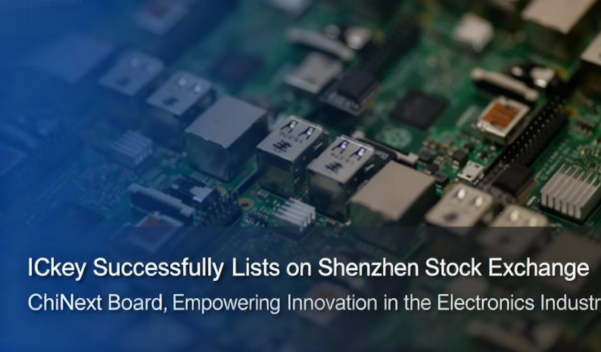Communication Interface ICs
Communication and Interfaces refer to the systems and methods by which information is exchanged between different devices, systems, or components within a network or a larger system. They are essential for the functioning of modern technology, enabling devices to interact and share data effectively.
Definition:
Communication and interfaces are the mechanisms that allow data to be transmitted and received between different entities. This includes hardware components, software applications, and even human users. The term encompasses both the physical connections (like cables and wireless signals) and the protocols that govern how data is formatted and transmitted.
Functions:
1. Data Transmission: Moving information from one point to another, ensuring that it arrives intact and in a timely manner.
2. Signal Processing: Converting analog signals to digital or vice versa, and processing data to meet the requirements of the receiving device.
3. Protocol Management: Implementing and adhering to communication protocols that define the rules for data exchange.
4. Error Detection and Correction: Identifying and correcting errors that may occur during transmission to ensure data integrity.
5. Synchronization: Ensuring that data is sent and received at the correct time to maintain the coherence of operations.
Applications:
- Computer Networking: Facilitating the exchange of data between computers and devices on a network.
- Embedded Systems: Enabling microcontrollers and sensors to communicate with each other and with external systems.
- Telecommunications: Supporting voice, video, and data services over telephone lines, mobile networks, and the internet.
- Industrial Automation: Coordinating the operation of machinery and processes in manufacturing and other industries.
- Consumer Electronics: Allowing devices like smartphones, TVs, and home appliances to connect and interact.
Selection Criteria:
When choosing communication and interface technologies, consider the following:
1. Compatibility: Ensure that the interface is compatible with the devices and systems it will connect.
2. Speed: Select an interface that can handle the required data transfer rates.
3. Reliability: Choose technologies with a proven track record of reliable performance.
4. Security: Consider the security features of the interface to protect against data breaches and unauthorized access.
5. Scalability: Opt for interfaces that can grow with your system's needs.
6. Cost: Evaluate the cost-effectiveness of the interface, including initial investment and ongoing maintenance.
7. Ease of Use: Consider the complexity of implementation and the learning curve for users.
In summary, communication and interfaces are critical for the seamless operation of interconnected systems, and their selection should be based on a careful assessment of the specific needs and constraints of the application.
Please refer to the product rule book for details.
Definition:
Communication and interfaces are the mechanisms that allow data to be transmitted and received between different entities. This includes hardware components, software applications, and even human users. The term encompasses both the physical connections (like cables and wireless signals) and the protocols that govern how data is formatted and transmitted.
Functions:
1. Data Transmission: Moving information from one point to another, ensuring that it arrives intact and in a timely manner.
2. Signal Processing: Converting analog signals to digital or vice versa, and processing data to meet the requirements of the receiving device.
3. Protocol Management: Implementing and adhering to communication protocols that define the rules for data exchange.
4. Error Detection and Correction: Identifying and correcting errors that may occur during transmission to ensure data integrity.
5. Synchronization: Ensuring that data is sent and received at the correct time to maintain the coherence of operations.
Applications:
- Computer Networking: Facilitating the exchange of data between computers and devices on a network.
- Embedded Systems: Enabling microcontrollers and sensors to communicate with each other and with external systems.
- Telecommunications: Supporting voice, video, and data services over telephone lines, mobile networks, and the internet.
- Industrial Automation: Coordinating the operation of machinery and processes in manufacturing and other industries.
- Consumer Electronics: Allowing devices like smartphones, TVs, and home appliances to connect and interact.
Selection Criteria:
When choosing communication and interface technologies, consider the following:
1. Compatibility: Ensure that the interface is compatible with the devices and systems it will connect.
2. Speed: Select an interface that can handle the required data transfer rates.
3. Reliability: Choose technologies with a proven track record of reliable performance.
4. Security: Consider the security features of the interface to protect against data breaches and unauthorized access.
5. Scalability: Opt for interfaces that can grow with your system's needs.
6. Cost: Evaluate the cost-effectiveness of the interface, including initial investment and ongoing maintenance.
7. Ease of Use: Consider the complexity of implementation and the learning curve for users.
In summary, communication and interfaces are critical for the seamless operation of interconnected systems, and their selection should be based on a careful assessment of the specific needs and constraints of the application.
Please refer to the product rule book for details.
Categories
Datasheets
NL7WB66USG Datasheet
MAX14830ETM+ Datasheet
TLP785(GR,F) Datasheet
LTV-817S-TA1 Datasheet
MAX13237EETE+T Datasheet
CAP200DG-TL Datasheet
PI3EQX1014ZTFEX Datasheet
PTN3360DBS,518 Datasheet
KSZ9897RTXC Datasheet
SN65HVD33DR Datasheet
USB3320C-EZK Datasheet
TMUX136MRSER Datasheet
TMUX136RSER Datasheet
MAX13237EETE+ Datasheet
TLP116A(TPL,E Datasheet
Article

What Is a Potential Transformer (PT)?
Table of Contents + 1. Basic Definition & Background 1.1. What Is a Potential Transformer? 1.2. PT vs Ordinary Transformer vs Instrument Transformer 1.3. Applications of Potential Transformers / What Are Potential Transformers Used For?2. Operation Principle 2.1. Working Principle of a PT / VT 2.2. Voltage Ratio & Turn Ratio Relationship 2.3....
Learn More >
ICkey Named Intel IoT Solution Aggregator, Marking Strategic Milestone in Partnership
ICkey, a leading distributor of electronic components and provider of digital supply chain solutions, has entered into a strategic partnership with global semiconductor giant Intel, becoming an official Intel IoT Solution Aggregator. To commemorate this milestone, the two companies held a signing ceremony under the theme “Smart Connectivity, Powering the Future.” During the ceremony, Bi Fenglei, Senior ...
Learn More >

ICkey Successfully Lists on Shenzhen Stock Exchange ChiNext Board, Empowering Innovation in the Electronics Industry
On September 30, 2025, ICkey (Shanghai) Internet & Technology Co., Ltd. (ICkey) announced its successful listing on the ChiNext Board of the Shenzhen Stock Exchange under the stock code 301563. As a leading vertical B2B supply chain platform in the electronic components sector, ICkey supports the R&D, production, and procurement needs of the electronics manufacturing industry - specifically targeting small and medium-b...
Learn More >










 ICs_1755240287389.jpg)






















